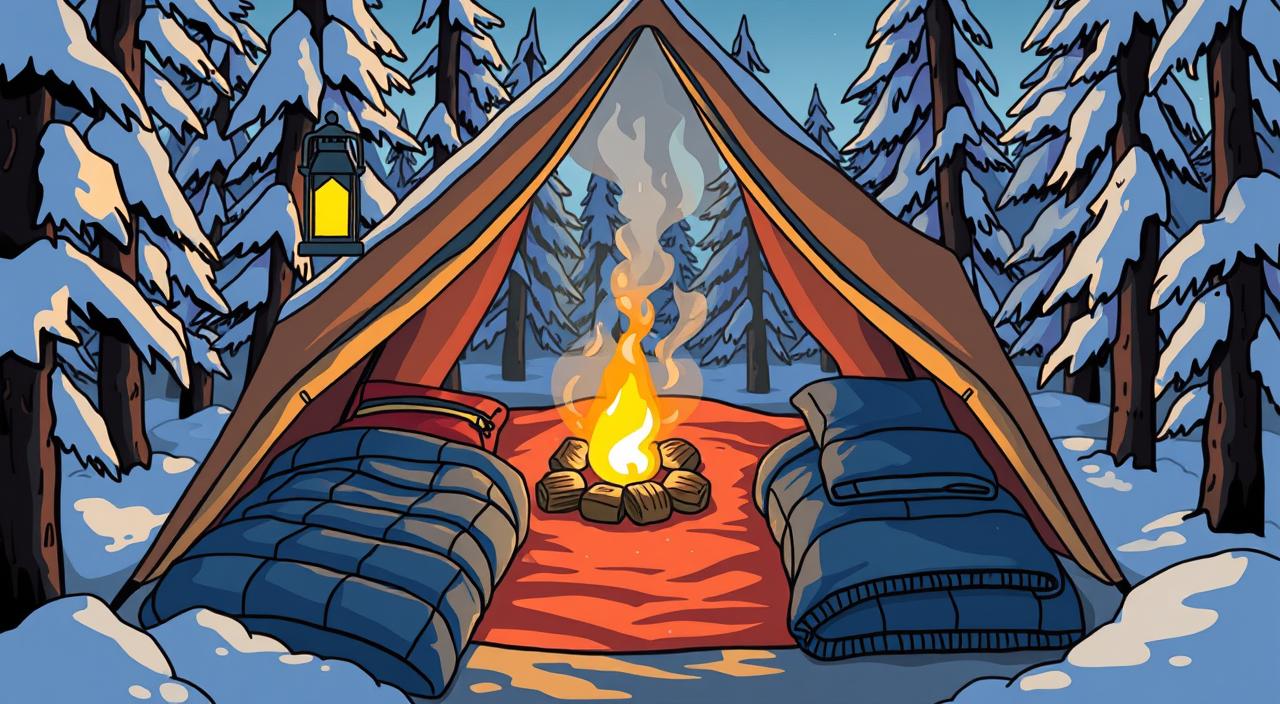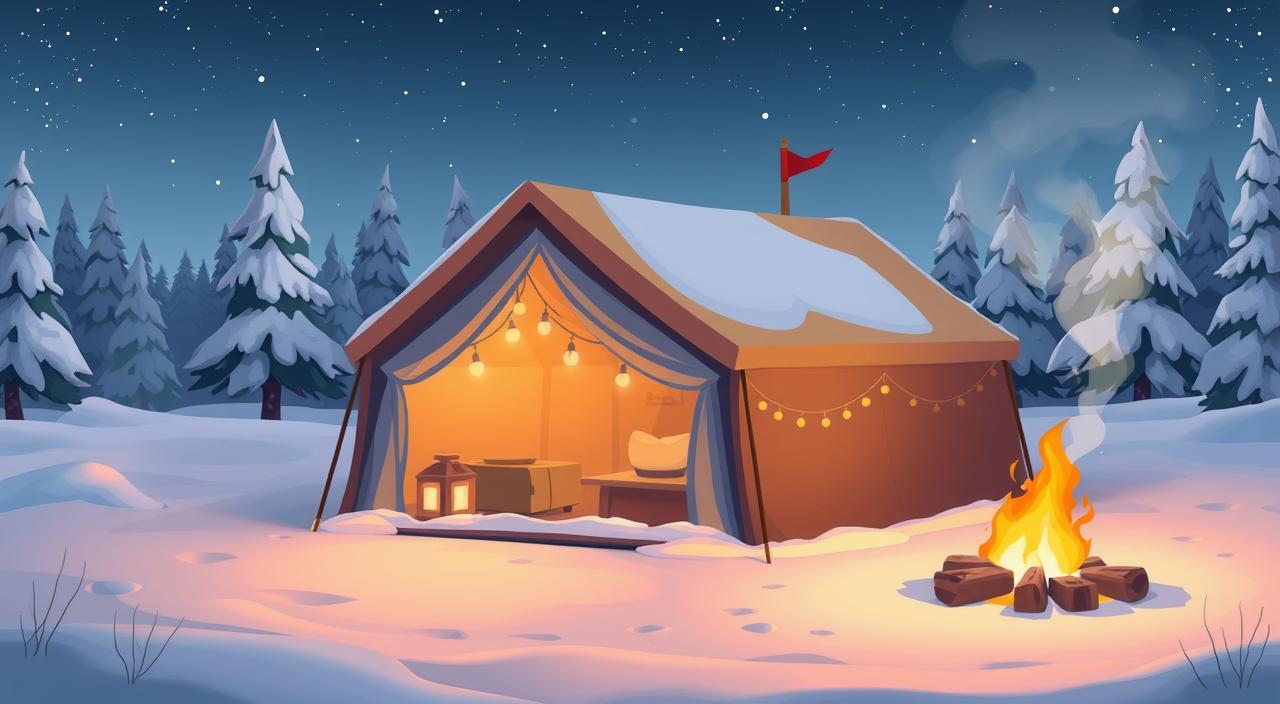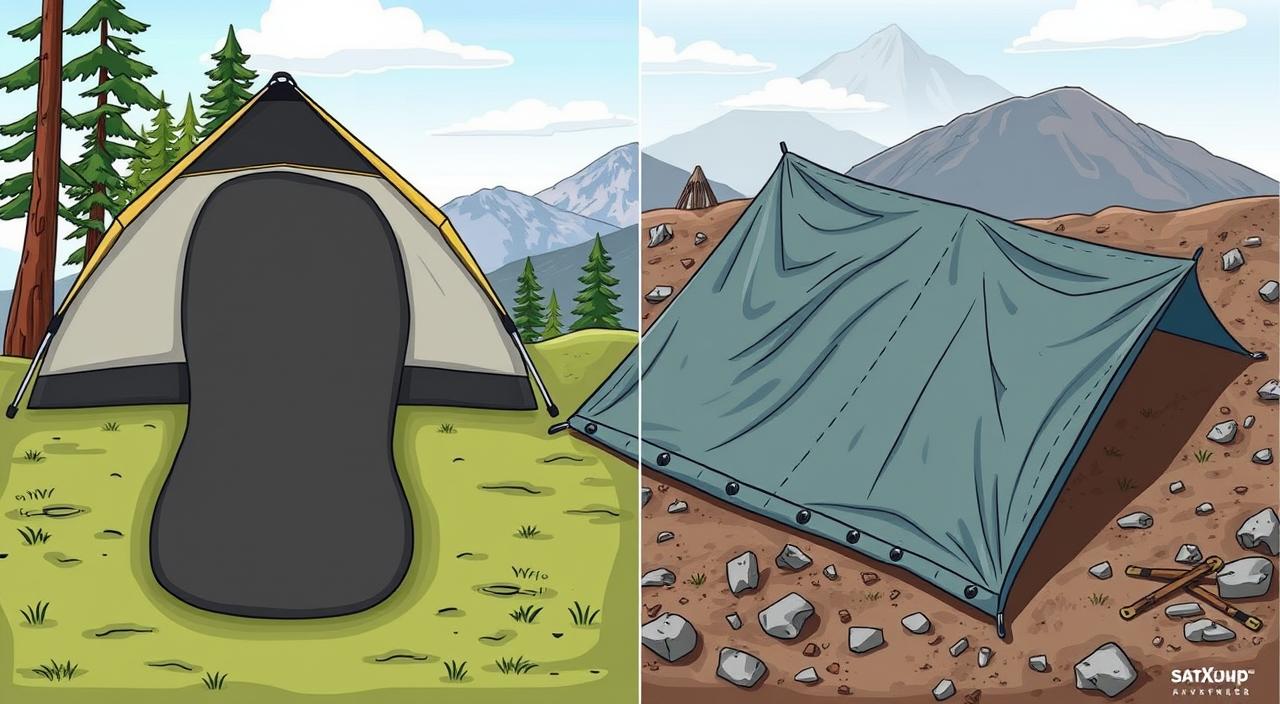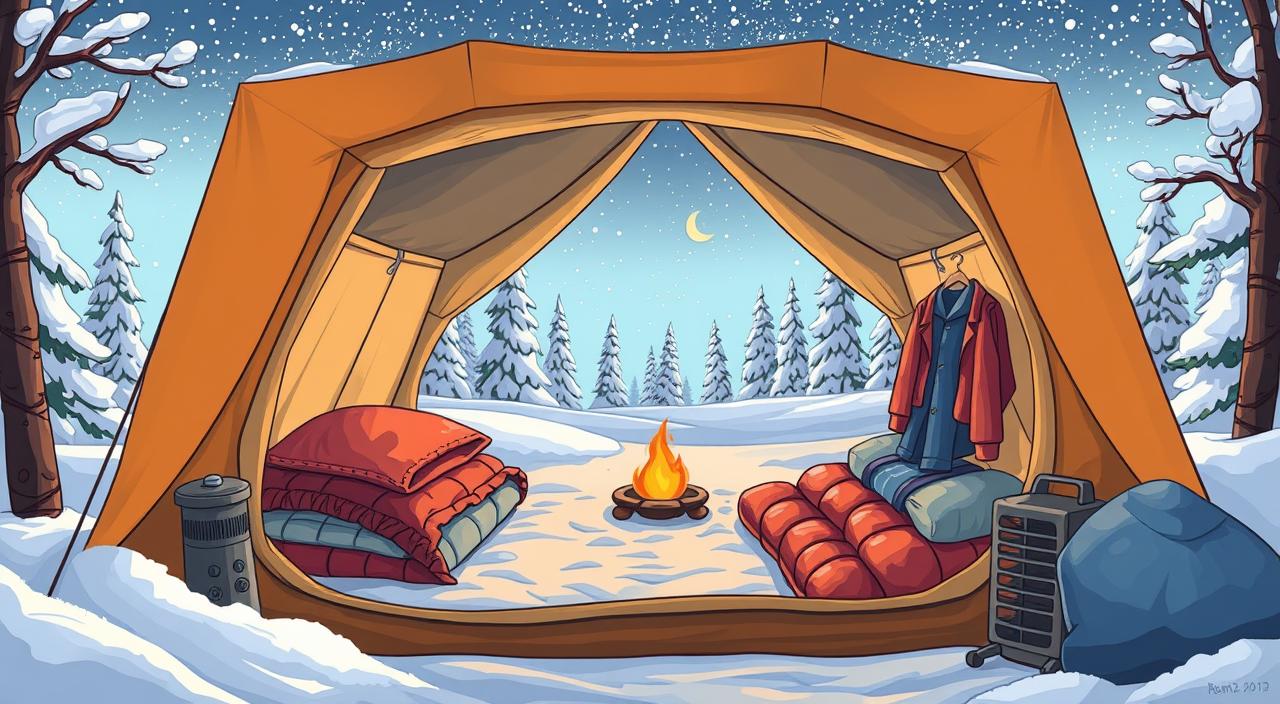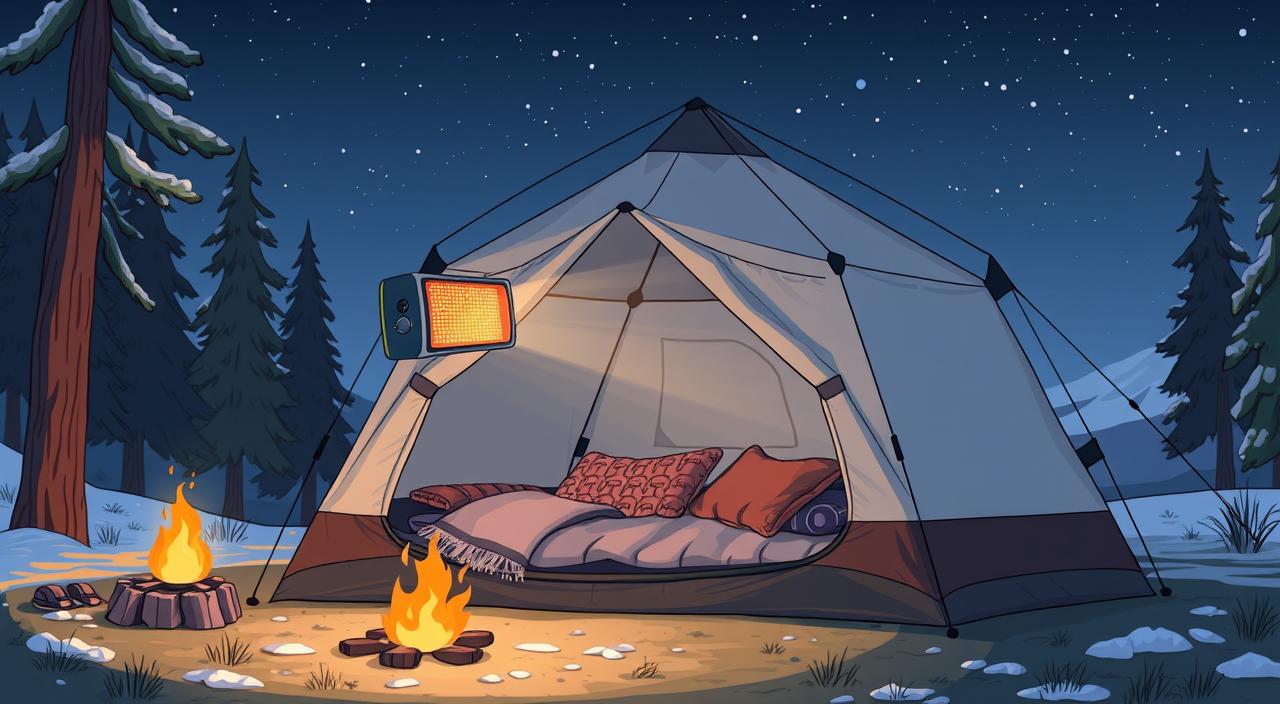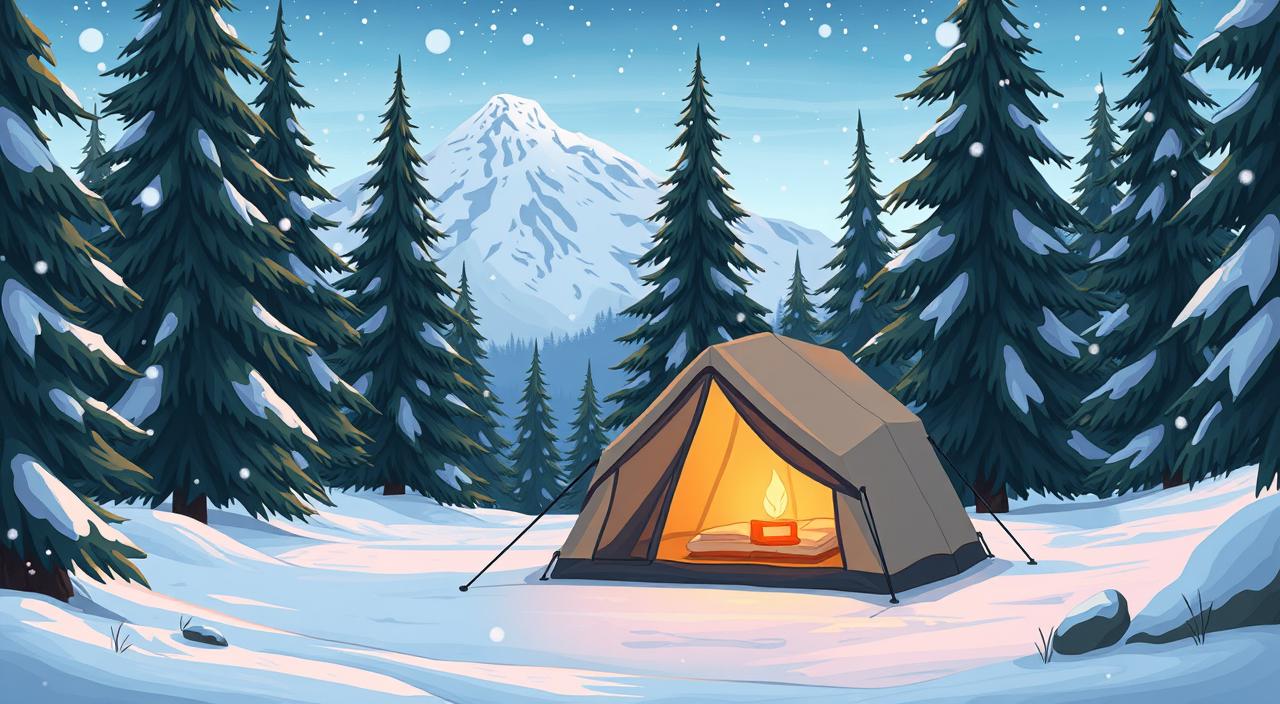
Disclaimer: This post may contain affiliate links. As an Amazon Associate, we earn from qualifying purchases.
Ever wondered how to stay warm on a cold night under the stars? Choosing the right tent is key for a good winter camping trip. We’ll look at what makes a tent great for winter, so you can stay cozy even in the coldest weather. This guide will help you pick the best insulated tent for your winter adventures.
Key Takeaways
- The average price range for insulated tents is between $590 and $4,900.
- Snowtrekker Tents are widely recognized as the best canvas tents for winter camping.
- Most insulated tents can accommodate between 1 to 12 people, offering various sizes for different needs.
- Choosing a 4-season tent is crucial for surviving extreme weather conditions.
- Weight, setup time, and durability against severe weather are vital features to consider.
- Insulated tents often come with features that enhance warmth, such as stove compatibility and extra ventilation.
What Is an Insulated Tent for Winter?
An insulated tent for winter is key for adventurers who love to camp in the cold. These tents are made to keep you warm in freezing temperatures and harsh weather. They have thick fabrics and insulation to keep the warmth inside.
Thermal tents also use materials that reflect heat, keeping you cozy in freezing cold. They can handle strong winds and lots of snow, making them great for winter camping. Here are some reasons why insulated tents are perfect for winter:
- Robust Structure: Ensures stability and protection against wind and snow.
- Thick Fabrics: Provides an effective barrier to external cold.
- Insulation: Retains heat, offering a comfortable interior climate.
- Thermal Reflective Materials: Enhance heat retention and minimize energy loss.
When choosing a winter camping tent, think about what you need for your adventures. The right insulated tent will make you more comfortable and enhance your winter camping experience. With many options available, you can find one that fits your needs and budget, making your winter trips fun and refreshing.
| Type | Capacity | Pitched Dimensions (cm) | Packed Weight (kg) | Price (USD) |
|---|---|---|---|---|
| Crua Culla | 2 people | 207 x 133 x 110 | 7 | 850 |
| Crua Culla Solo | 1 person | 210 x 80 x 60 | 3.39 | 670 |
| Sea To Summit Telos TR2 | 2 people | 215 x 135 x 109 | 1.8 | 649 |
| Crua Cruccon | 3 people | 203 x 190 x 110 | 5.2 | 859 |
| Whiteduck Regatta Canvas Bell | 10 people | 304 x 304 x 226 | 23 | 700 |
| REI Base Camp 4 | 4 people | 254 x 218 x 152 | 7.7 | 450 |
| Mountain Hardwear Trango 4 | 4 people | 244 x 239 x 127 | 5.5 | 1200 |
| Arctic Oven 12 Person | 12 people | 375 x 375 x 218 | 35 | 4000 |
Why Do You Need a 4-Season Tent for Winter Camping?
Winter camping is exciting but requires careful planning for safety and comfort. A 4-season tent is key for cold weather trips. These tents are made to handle heavy snow, strong winds, and freezing temperatures, unlike 3-season tents.
Here are some key reasons to use a 4-season tent for winter camping:
- Durability: These tents have thicker walls and fewer mesh panels. This means they keep warm better and stand up to harsh weather.
- Wind Resistance: 4-season tents can handle winds over 40 mph. They’re a strong shield against strong winds.
- Snow Load Capability: They can take a lot of snow without collapsing. So, heavy snow won’t be a problem.
- Comfort: Better insulation means a cozy place to sleep after a day outside.
Switching from a 3-season to a 4-season tent makes a big difference. While 3-season tents are lighter and cheaper, they’re not made for extreme weather. A 4-season tent ensures your safety and comfort in harsh conditions.
Choosing the Right Insulated Tent for Winter Adventures
Choosing the right insulated tent is key for a warm and safe winter camping trip. Look at the weight, size, insulation type, and how long it lasts. A good winter backpacking tent is light but strong against the cold. An expedition tent is bigger, perfect for base camping, with room for gear and comfort.
Here are important features to check:
- Robust Weatherproofing: Tents must stand up to heavy snow and strong winds. Make sure to pitch it right to avoid issues.
- Ample Vestibule Space: This is important for storing your gear and keeping it dry.
- Sturdy Poles: Strong poles mean a stable and long-lasting tent in winter.
- Material Quality: Winter tents use waterproof and airtight materials. Look for DWR treatment for extra protection.
Knowing what features to look for can make your winter camping better. Smaller tents keep heat in well and make for a cozier space. Use foam pads or thin mats to insulate the tent floor against the cold ground.
Keep these points in mind when picking a tent for winter. The right tent makes camping warm and safe, no matter the cold. Choose based on your adventure plans, whether it’s a simple trip or a big expedition.
Best Overall Insulated Tent for Winter: Mountain Hardwear Trango 2
The Mountain Hardwear Trango 2 is a top choice for winter camping. It’s a 4-season tent made to handle extreme weather. It offers a comfortable place to stay, thanks to its smart design and strong features.
Features and Specifications
This tent has many features that make it stand out:
- Weight: 9 lb 13 oz
- Floor area: 40 sq. ft.
- Pole design: 5-pole setup with an extra pole for the fly
- Storage: 8 internal pockets and 2 vestibules for your gear
- Wind resistance: Can handle winds over 30 mph
- Temperature tolerance: Works well in -45°F wind chill
- Durability: Made to last more than a decade
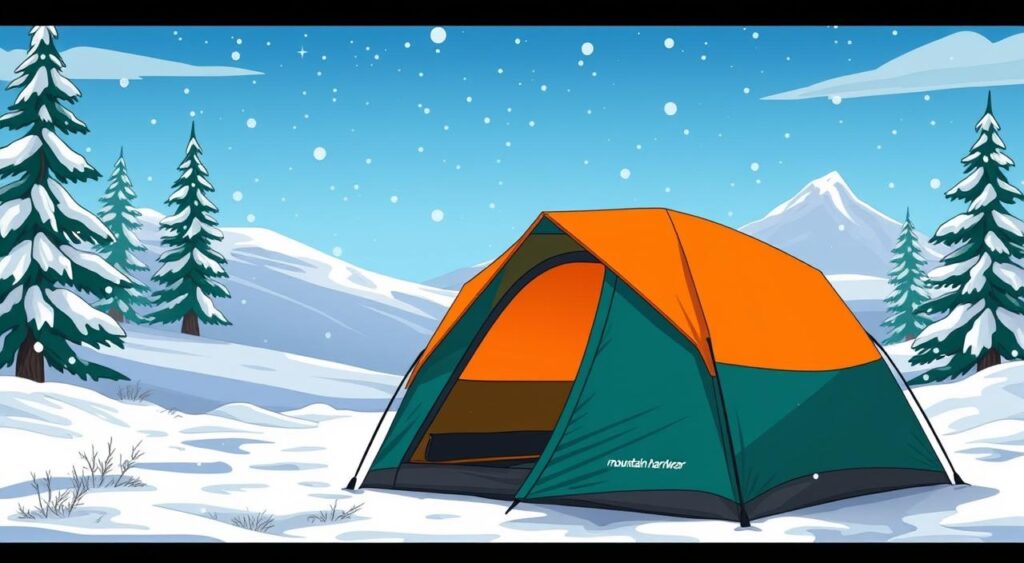
Pros and Cons
It’s important to look at the good and bad points of this tent:
| Pros | Cons |
|---|---|
| Great for two campers, very livable | It’s a bit heavy |
| Never leaks in bad weather | It’s more expensive |
| Can take heavy snow | Setting it up is slow in freezing temps |
| Very durable materials and stitching | May have condensation issues in extreme cold |
The Mountain Hardwear Trango 2 is a top pick for winter camping. It’s durable, spacious, and ready for any weather. It’s a great investment for your cold adventures.
Top Picks for Winter Camping Tents
Choosing the right tent for winter camping means looking at several great options. Each one meets different needs and preferences. Here’s a look at the top winter camping tents. They’re made to handle extreme cold and keep you warm on chilly nights.
Comparison Overview
| Tent Model | Weight | Floor Area | Price |
|---|---|---|---|
| Mountain Hardwear Trango 2 | 9 lb 10.2 oz | 40 sq. ft. | $900 |
| Black Diamond FirstLight 2P | 2 lb 9 oz | 27.3 sq. ft. | $450 |
| Nemo Kunai 2P | 4 lb 5 oz | 26 sq. ft. | $550 |
| North Face VE 25 | 10 lb 5 oz | 48 sq. ft. | $900 |
| Black Diamond Mega Light | 2 lb 13 oz | 50.7 sq. ft. | $450 |
Features of Each Top Pick
- Mountain Hardwear Trango 2: A top pick for its excellent weather resistance and strong build. It’s perfect for winter backpacking.
- Black Diamond FirstLight 2P: This tent is super light, ideal for those who value portability. It might be smaller inside, but it’s great for weight-conscious campers.
- Nemo Kunai 2P: It’s a versatile choice that balances warmth and flexibility. You can adjust the zippers to suit the weather for your winter camping trips.
- North Face VE 25: This tent is designed for extreme cold and offers a lot of space. It’s a great pick for basecamp setups, offering room for two people.
- Black Diamond Mega Light: At under three pounds, this tent is perfect for those who love to travel light. It still performs well in winter conditions.
Insulated Tent for Winter: Key Features to Look For
When planning for winter camping, choosing the right insulated tent is key. It makes your outdoor adventure better. Here are some important features to think about:
- Heat Retention Capabilities: Find a thermal tent that keeps warmth in and cold out. It should have good insulation.
- Waterproof Materials: Make sure the tent is made of high-quality waterproof fabric. It should be able to handle snow and rain. Look for a density of at least 50 deniers in the nylon fabric.
- Robust Pole Structures: For windy or rainy areas, pick tents with thick poles. They should be at least 9 mm thick for stability and reliability.
- Weatherproofing Features: Look for tents with snow flaps or reinforced seams. These help you manage winter weather better.
- Livability Enhancements: Features like vestibules and multiple pockets for gear make camping more comfortable and easy.
An insulated tent for winter helps you enjoy your outdoor adventure more. Brands like Crua Outdoors offer innovative designs. They have air beams for quick setup and good ventilation. These are great for both small and large groups.
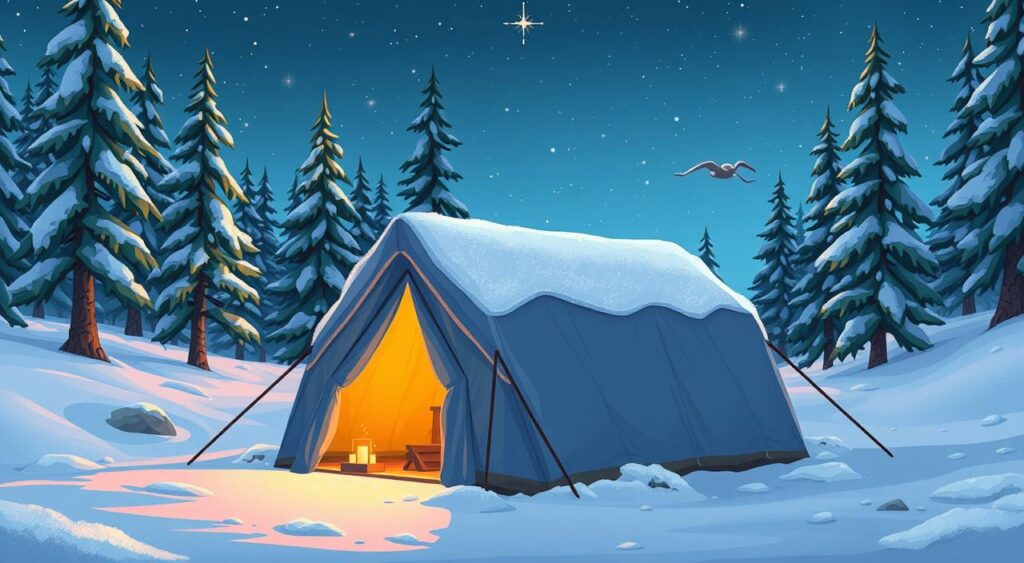
Winter Backpacking and Mountaineering Tents
Choosing the right tent for winter backpacking or mountaineering is key to staying safe and comfortable. A good mountaineering tent shields you from extreme weather, letting you enjoy your adventure. There are many models to choose from, each suited for different needs, whether you’re going fast or facing tough conditions.
Best Options for Fast and Light Mountaineering
For those who prefer lightweight gear, the Black Diamond FirstLight 2P and Samaya 2.0 are excellent choices. The Samaya 2.0 is super light at 3.61 lbs, ideal for quick trips. The Hilleberg Jannu, at 6.87 lbs, offers a good mix of lightness and space, measuring 93 x 57 inches.
These tents help you stay nimble and ready for the weather’s surprises on your expeditions.
Durability and Weather-Resistance
For polar treks, your tent must be tough. The Mountain Hardwear Trango 2 is built to last in extreme cold. It’s heavy at 9.09 lbs but spacious, measuring 85 x 64 inches. The North Face Mountain 25 is also a reliable choice, combining strength with practicality.
Winter backpacking tents should keep you warm and protect your gear from the elements.
For more info on tents for your winter adventures, visit these winter backpacking tents. They offer a range of options for different needs and tastes.
Setting Up Your Tent for Extreme Cold Weather
Getting ready for winter camping means setting up your insulated tent right for warmth and comfort. First, pick a spot that protects you from the wind. Look for places with trees or hills to block the wind.
Make sure your winter camping tent is well-staked down. Strong winds can knock over a tent if it’s not tied down right. Use snow to insulate your tent. Digging a platform under your tent keeps it away from the cold ground, making it warmer inside.
Double-check that your tent’s rainfly is on correctly. A rainfly with a high waterproof rating keeps moisture out. For extra warmth, put a thermal blanket over your tent to keep your body heat in.
Use sleeping pads with high R-values for extra insulation. A mat with an R-value of 4.4 keeps you warm by resisting heat loss. Match it with a sleeping bag made for cold weather, with a hood to keep your heat in.
Try using tent footprints and foam pads for more ground insulation. A tent heater can make your winter tent very cozy. Adding fleece blankets inside also helps keep things warm with your winter gear.
Use these tips to get your winter tent ready for a great trip. With the right setup, your insulated tent will be a warm place to stay.
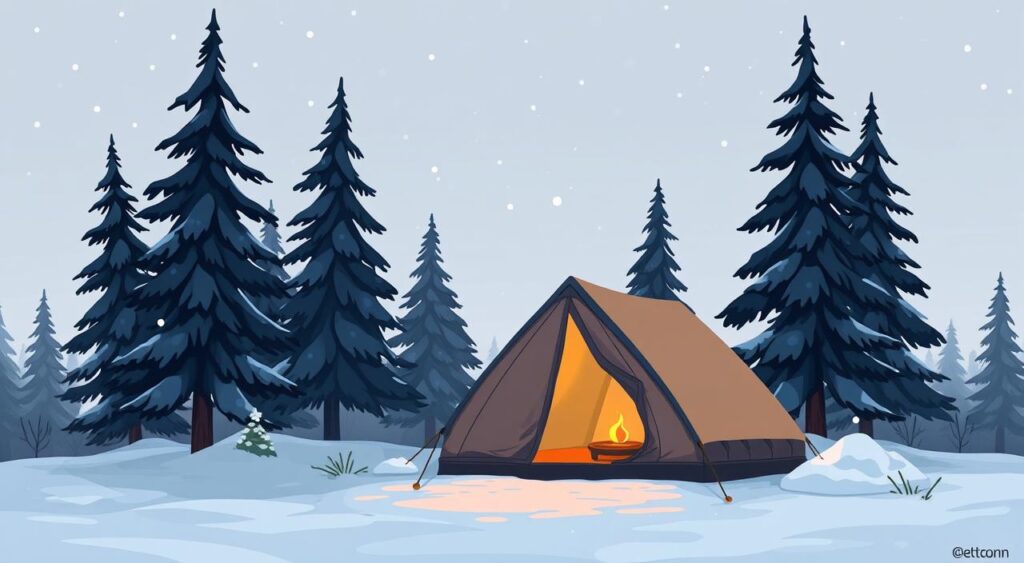
| Feature | Recommended Value |
|---|---|
| R-Value of Sleeping Mat | 4.4 |
| Inner Quilt R-Value | 2.7 |
| Rainfly Waterproof Rating (Classic Models) | 5000 HH |
| Rainfly Waterproof Rating (Lite Range) | 3000 HH |
| Temperature Rating for Sleeping Bags | Sub-zero |
| Additional Warmth from Sleeping Bag Liners | 10-15 degrees |
Maintenance Tips for Winter Tents
Keeping your winter camping tent in good shape is key to a long life and great performance. Regular care boosts the tent’s durability, making your outdoor adventures in the cold better. Here are some important tips to keep your gear ready for the next trip.
Cleaning and Storing Your Tent
Always clean your insulated tent for winter after each trip. Begin by shaking off any dirt and debris. Make sure to check the zippers well, as food or sand can block them. Use a damp cloth with mild soap to clean the fabric, but avoid harsh chemicals that can damage it.
Storing your tent right is also vital for winter tent maintenance. Keep it in a cool, dry place, making sure it’s dry to avoid mildew. Fold the tent instead of stuffing it into a bag to keep its shape and structure. A tent bag can also protect it from the elements when not in use.
How to Repair Minor Damage
Fix any small damage to your insulated tent for winter quickly. Neglecting small tears can lead to bigger issues. Use repair patches for fabric damage and seam sealers for leaks. Learn about your tent’s warranty and the manufacturer’s repair advice for the best results.
Regular maintenance of your insulated winter tent helps avoid big problems on your trips. It ensures you stay warm and safe from the cold.
| Maintenance Task | Frequency | Tips |
|---|---|---|
| Cleaning | After Every Use | Use mild soap, focus on zippers |
| Storing | Seasonally | Store dry, fold neatly |
| Repairing Damage | As Needed | Use repair patches and seam sealers |
Conclusion
Choosing the right insulated tent for winter is key to having fun and staying safe outside. You might pick the Mountain Hardwear Trango 2 or look at options from The North Face and Hilleberg. The tent you choose affects how warm you stay in cold weather.
Look for tents with double walls and good insulation for winter camping or mountaineering. Adding extra warmth with sleeping pads and heat packs helps a lot. Don’t forget the importance of air flow to keep your camping area safe.



